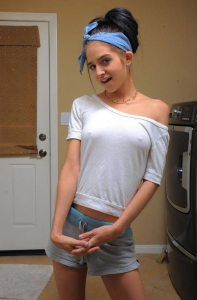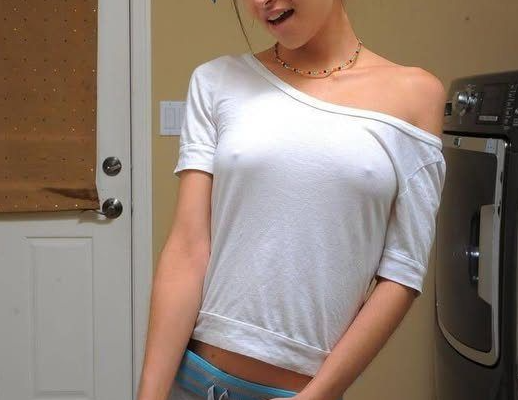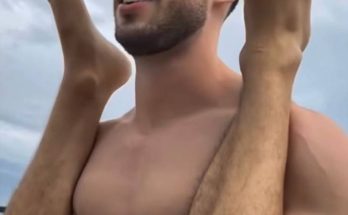“The Gallery of Unseen Things”
They called it The Gallery of Unseen Things. No signs, no tickets, no hours. Just a door in a forgotten alley, painted the color of dried blood, with a brass plaque that read: Don’t look if you can’t handle it.
Most people walked past. Some paused, smirked, and kept going. But a few—those with a hunger for the forbidden—pressed their palms to the door and stepped inside.
Mira was one of them.
She wasn’t reckless. She was curious. The kind of curiosity that had once made her dissect her childhood teddy bear to see what made it “breathe.” The kind that had driven her to study forensic psychology, not to solve crimes, but to understand the minds that committed them.
Inside, the gallery was silent. No curator, no guide. Just a long corridor lit by flickering bulbs and lined with 23 frames. Each held a photograph. No labels. No explanations.
The first image was simple: a woman standing in a field, her back turned, her dress billowing in the wind. But something was wrong. Her shadow didn’t match her posture. It was reaching forward, arms outstretched, as if trying to escape her.
Mira leaned in. Her breath fogged the glass.
The second photo showed a man at a dinner table, surrounded by family. Everyone was smiling—except the man. His eyes were wide, mouth agape, as if he’d just seen something horrifying. But no one else seemed to notice.
By the fifth frame, Mira felt her pulse quicken. The images weren’t grotesque. They were subtle. Off-kilter. They whispered rather than screamed.
One showed a child’s birthday party. Balloons, cake, laughter. But in the corner, barely visible, was a figure in black, watching from behind a curtain. No one else in the photo seemed aware.
Another showed a hospital room. A woman lay in bed, eyes closed, serene. But her reflection in the window showed her screaming.
Mira’s stomach churned. These weren’t just photos. They were confessions. Secrets. Glimpses of truths people weren’t ready to face.
By the tenth frame, she realized something else: the gallery was changing her.
She began to notice things she hadn’t before. The way the light in the corridor bent unnaturally around certain frames. The faint hum that grew louder with each step. And the feeling—impossible to ignore—that she was being watched.
The fifteenth image stopped her cold.
It was a photo of her.
Not exactly. But close enough. A woman with her build, her hair, her posture. Standing in a room that looked eerily like her apartment. The woman was staring at a mirror. But the reflection showed her crying, clutching her chest, as if mourning something lost.
Mira staggered back. Her heart pounded. She wanted to leave—but she couldn’t. Not yet.
The sixteenth frame was blank.
No photo. Just a smear of something dark. Ink? Blood?
The seventeenth showed a man in a suit, smiling at a podium. Behind him, a crowd cheered. But if you looked closely, the crowd wasn’t cheering. They were screaming. Their mouths open in silent terror.
Mira felt dizzy. She pressed her hand to the wall to steady herself. The gallery was alive. Feeding on her reactions. Testing her limits.
The twentieth frame was the worst.
It showed a woman in a bathtub. Her wrists were slit. Water tinged red. But her face was calm. Peaceful. And in the mirror above the tub, her reflection was laughing.
Mira turned away, gasping. She wanted to scream, to run—but she couldn’t. She had to finish.
The twenty-first image was a forest. Trees bent unnaturally. In the center, a figure stood with no face. Just a mouth, stretched wide, whispering something Mira couldn’t hear—but felt.
The twenty-second was a family portrait. Smiling faces. But each person had a second face, faintly visible beneath the surface. Twisted. Angry. Desperate.
And then came the final frame.
It was a mirror.
Not a photo. Just a mirror.
Mira stepped closer. Her reflection stared back. But it wasn’t her. Not exactly.
This version of Mira looked older. Tired. Her eyes held secrets. Her mouth was set in a grim line. And behind her, in the reflection, were all 22 images—framed and flickering.
She reached out. Touched the glass.
And the gallery went dark.
When Mira emerged, the alley was empty. The door was gone. No plaque. No trace.
She walked home in silence, her mind buzzing. That night, she dreamed of shadows that didn’t match their owners. Of mirrors that laughed. Of truths too heavy to carry.
And in the morning, she found a photo on her doorstep.
It showed her sleeping.
But in the corner, behind the curtain, was a figure in black.
Watching.


